DMJ – Enzo Mari, Formazione Dinamica di una Sfera Reticolata
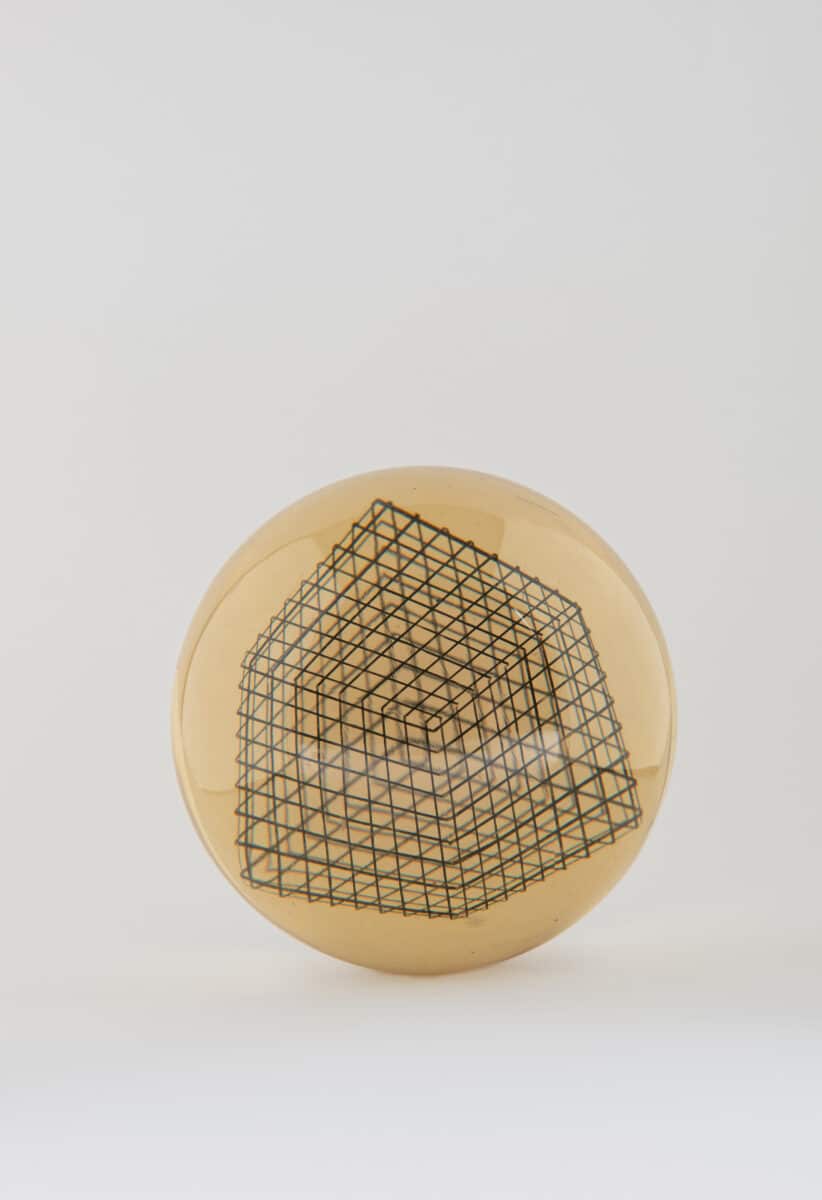
Enzo Mari’s Formazione Dinamica di una Sfera Reticolata (Dynamic Formation of a Reticulated Sphere), one of a series of objects produced under the title Relatione tra Contenuto e Contenitore (Relation between Content and Container), was manufactured by the Milanese company Danese between 1959 and 1963. It is a transparent polyester resin sphere with a serigraph-printed black square mesh cube contained inside. Measuring 12cm in diameter, it sits comfortably in the palm of the hand. It invites you to pick it up or to roll it around; once you do, the cube warps and distorts depending on the angle at which it is viewed or how the light refracts through the resin.
In an interview with Hans Ulrich Obrist in 2004, Mari described how he would have liked to have ‘invented’ the ball because ‘it is an object that never dies in a person’s life. People can play with a ball from when they’re one year old until they’re ninety, by themselves or in a group. It’s an archetype’.[1] The ambition to make archetypical objects characterised Mari’s approach to design, inspired by the perfection of the natural world and as a critique of contemporary consumerist tendencies.
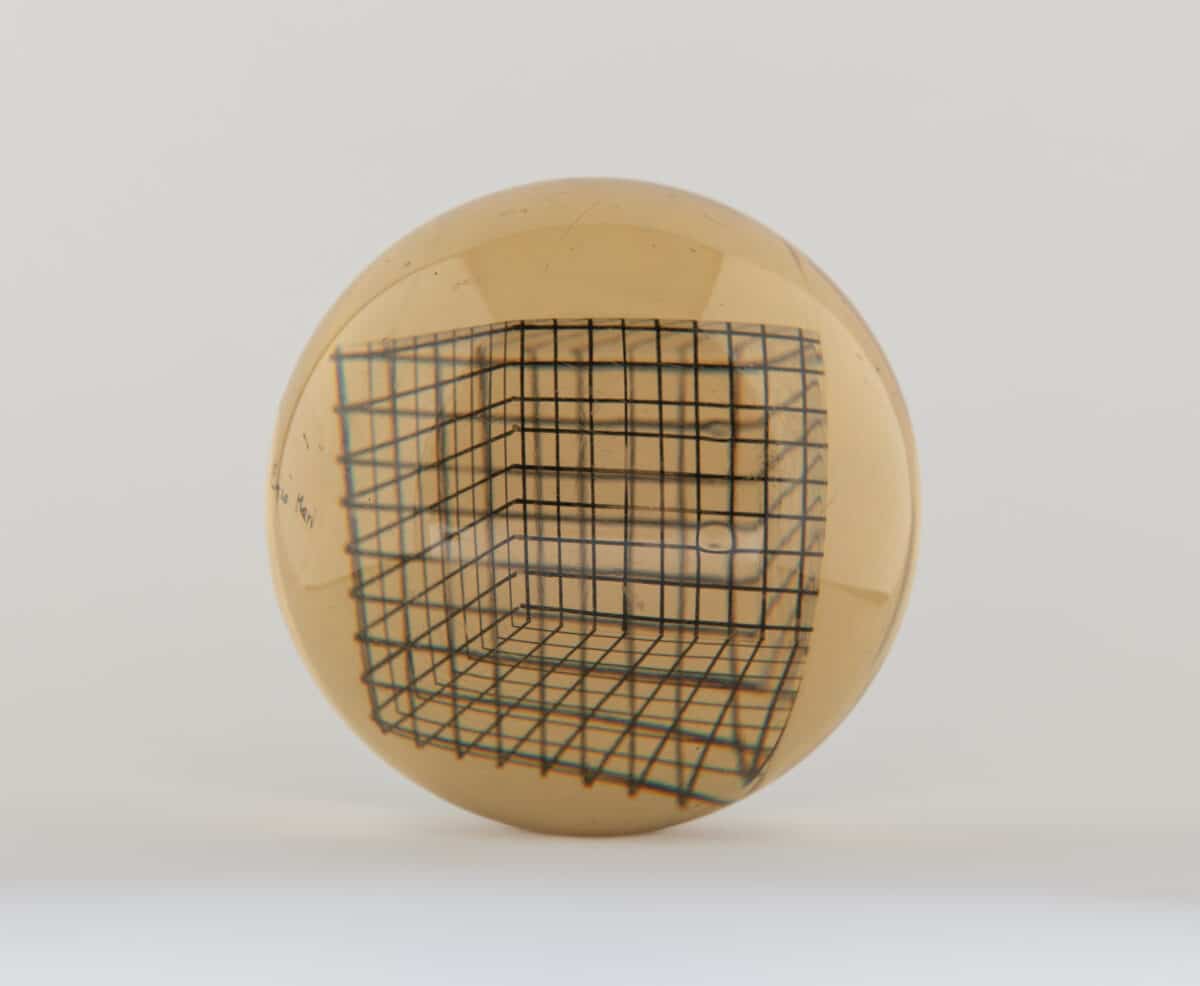
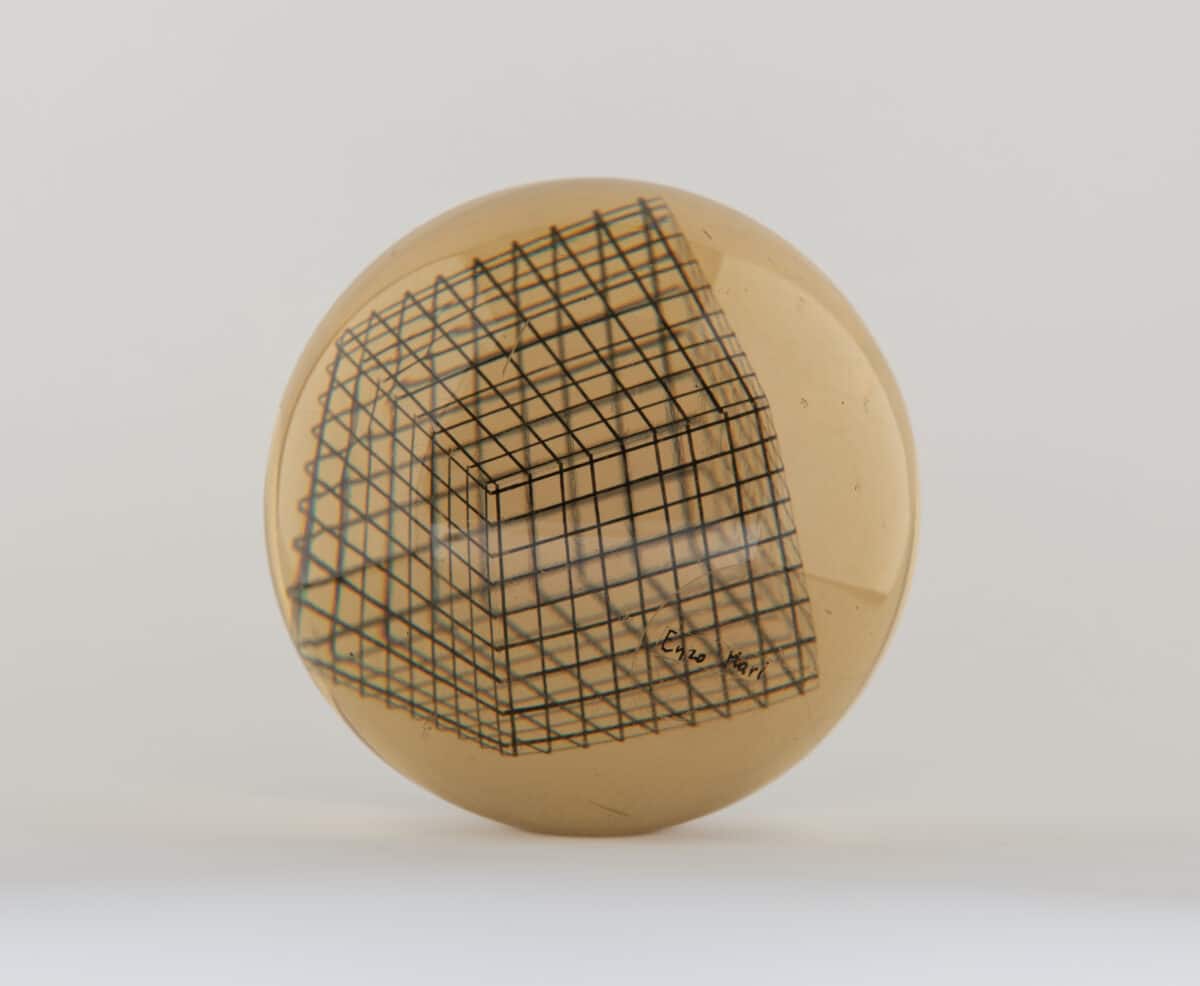
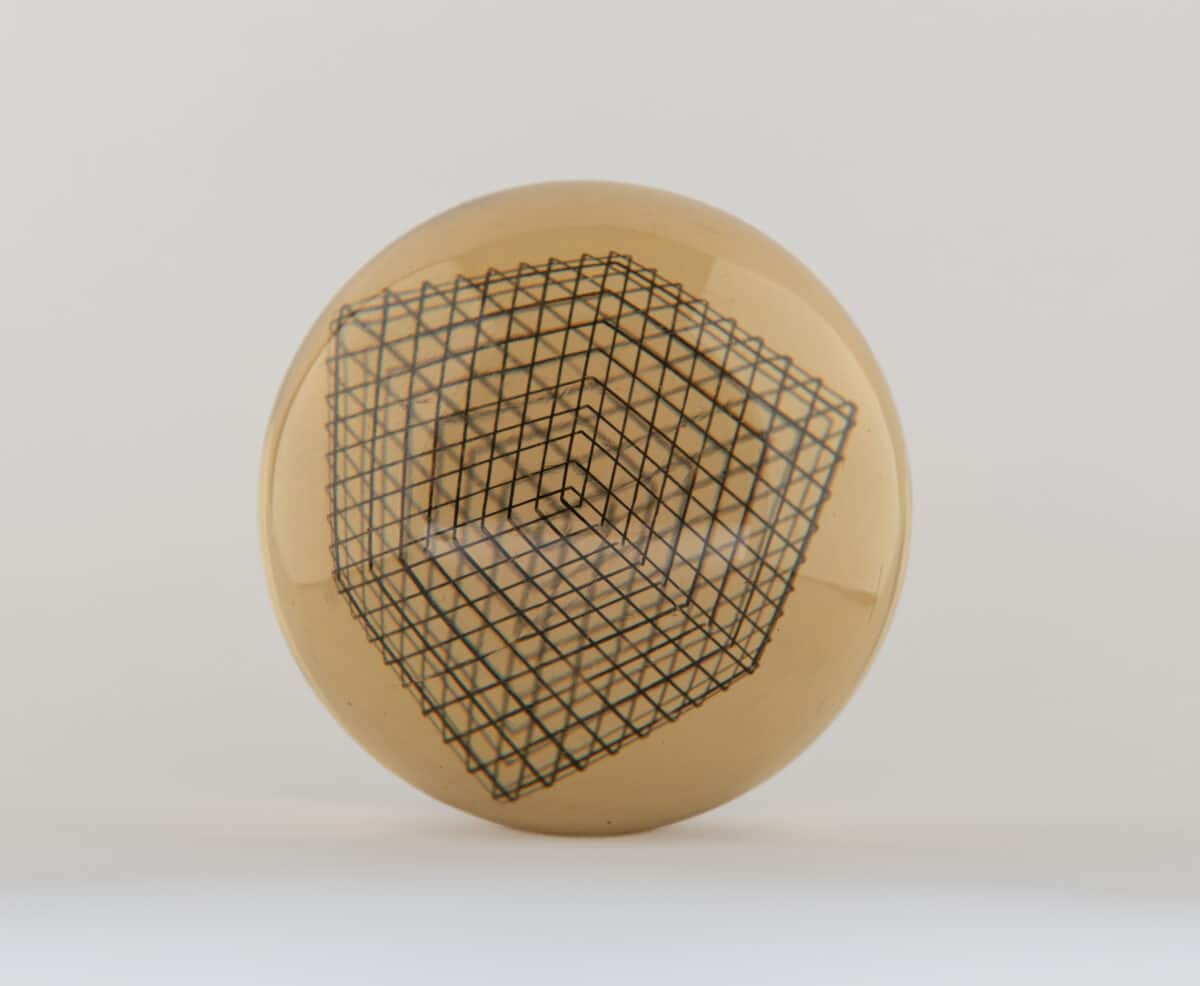

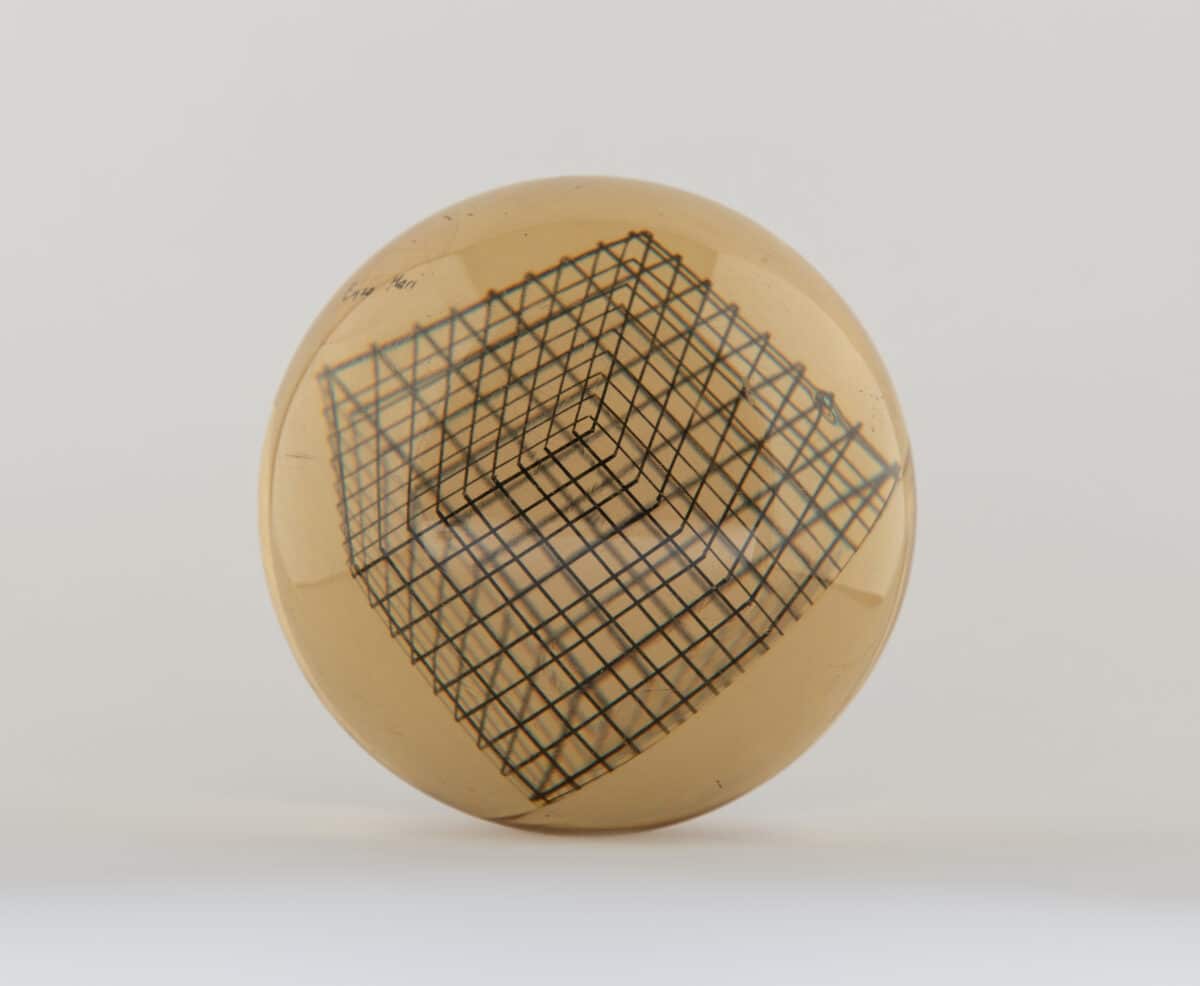
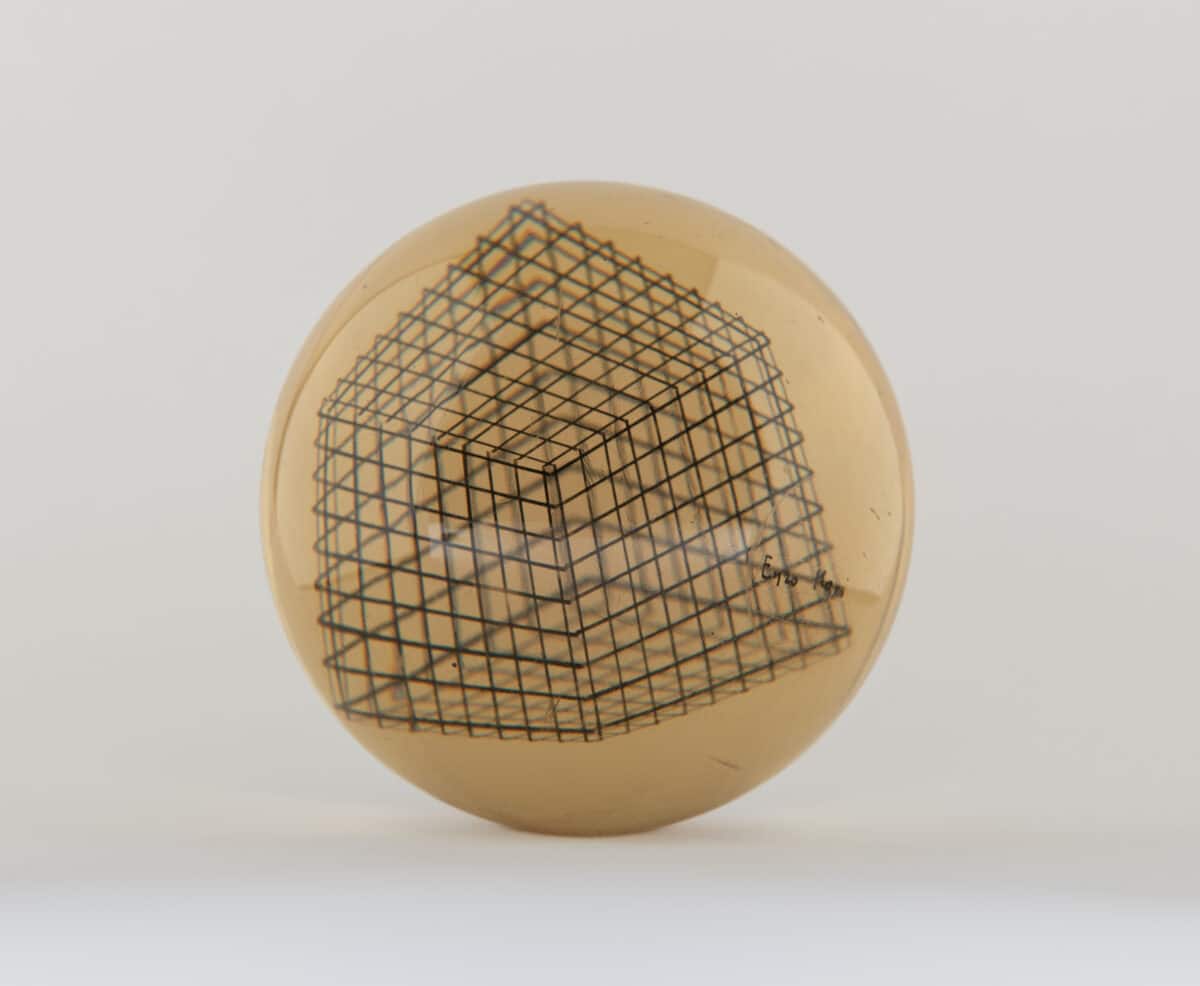

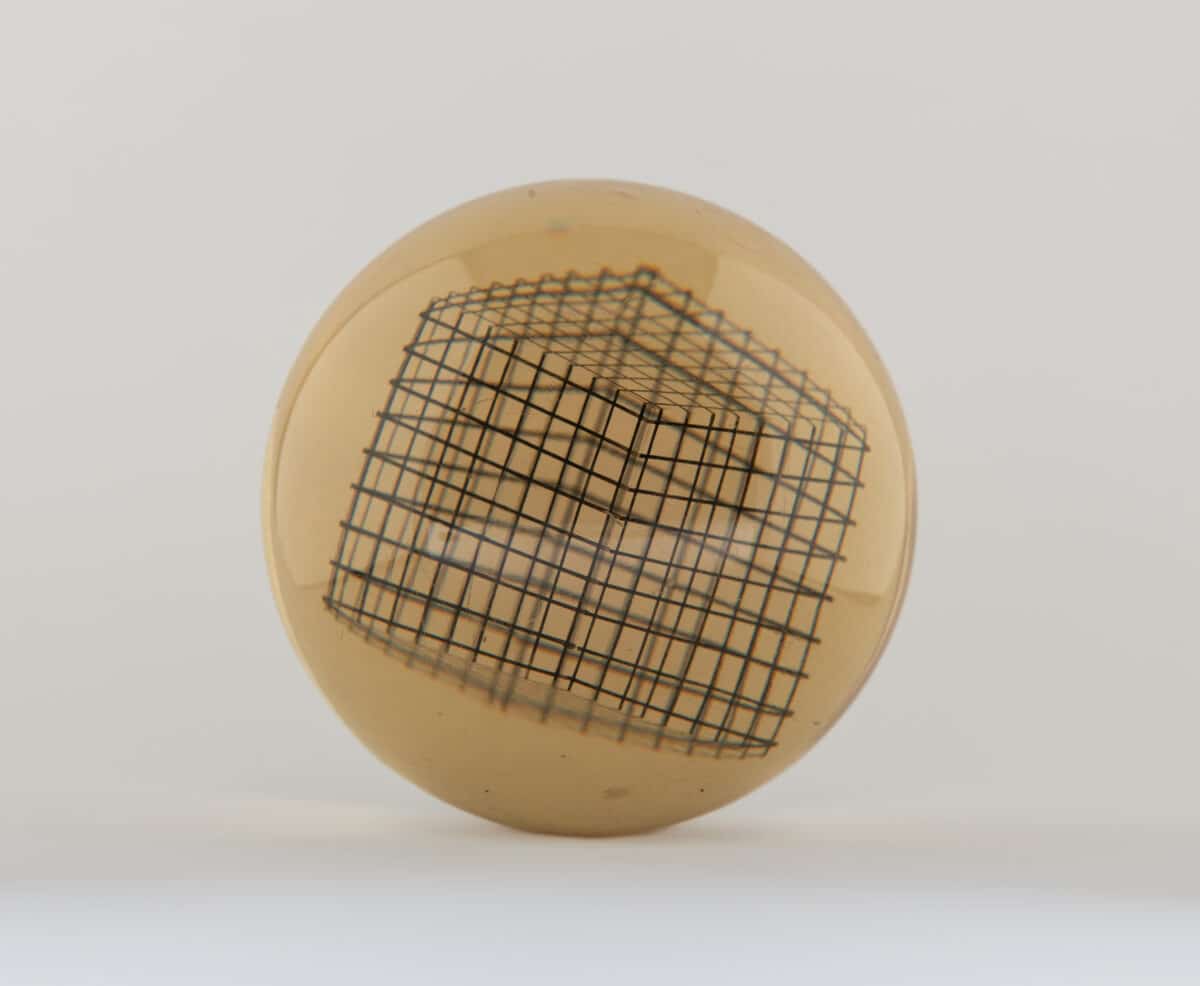

Yet for Mari the relationship between politics and design was also a frustrated one. In an interview for the Finnish furniture company Artek about the re-release of his famous Autoprogettazione range, which had originally been circulated as a set of DIY manuals sent via the post, he recounts an interaction with a young political leader who, despite his utopian dreams of equality, revealed his desire for a house with lavish furnishings, from marble floors to large Murano chandeliers.[2] Perhaps the Relatione tra Contenuto e Contenitore series was one way of addressing this conflict: a reminder that simple, well-designed gestures can open different ways of perceiving things. In doing this, the sphere takes the form of a kind of drawing instrument that is also—in its constant re-figuring of the orthographic gridded cube contained in its interior—an instrument of pleasure. It seems no coincidence that the ‘content’ enveloped by the globe is an object of such impeccable solemnity and authority, nor that the ‘container’ returns it to us in a spirit of such joyful play.[3]
* * *
Editors’ note: In the current exhibition at the Design Museum in London, one of the wall texts implies Enzo Mari’s participation in the exhibition Italy: The New Domestic Landscape (MoMA, 1972). While the exhibition did include many of Mari’s designed products, its curator, Emilio Ambasz, in fact purposefully invited him not to exhibit in the main ‘environments’ part of the exhibition. He produced instead the essay linked here. Read more on the New Domestic Landscape and material now in the Drawing Matter collection, here.
Notes
- Hans Ulrich Obrist and Enzo Mari, ‘Utopia Station, Munich, 2004’, in Enzo Mari curated by Hans Ulrich Obrist, eds Hans Ulrich Obrist and Franscesca Giacomelli (Milan: Electa, 2020), 47.
- ‘Enzo Mari for Artek: Homage to Autoprogettazione’ (2010): https://www.youtube.com/watch?v=xo-H8ViJarg [accessed 22 March 2024].
- An exhibition, held in Milan in November 1963, was described as showing ‘some studies, variants and copies concerning the optical-dynamic deformation of a regular volume highlighted graphically inside a sphere or cylinder or cube’. La Sfera di Enzo Mari (Milan: Bruno Danese, 1963), poster 63 x 45cm.
Rosie Ellison-Balaam graduated from the Courtauld Institute of Art with a BA hons degree in 2019. She is a writer and editor based between London and Cambridge. Her work spans across architecture and design, as an editor at Drawing Matter, co-running the gallery space Lot Projects, as well as publishing her own architectural journal, Folly.
The article is included in the second issue of DMJournal, Drawing Instruments: Instrumental Drawings.
